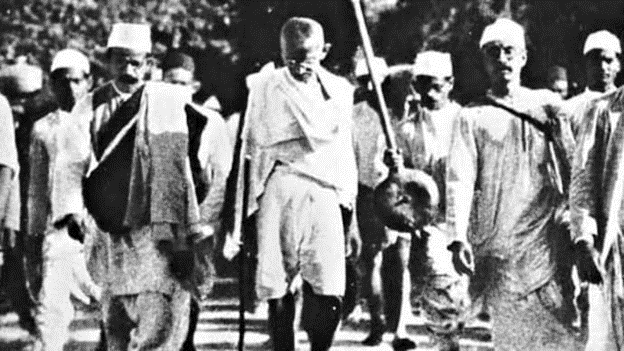Updated February 9, 2023
Civil Disobedience Movement
India’s struggle for independence began when the people refused to be subjugated by the British and decided to band together to achieve independence. The procedure, however, was complex. There were roadblocks at every turn. Many attempts were there to remove British forces from India, but most were unsuccessful. They did, however, strengthen India’s desire for freedom and pave the way for India’s eventual independence.On August 1, 1920, Gandhi launched the non-cooperation campaign, also known as the civil disobedience movement. The non-cooperation movement was the first organized mass movement in India’s independence war.
(Image credit: India Today)
Causes of the Movement
Indians were enraged by the British occupation of their country. The anti-collaboration movement began for a variety of reasons, but the following were the most important:
- Resentment toward the British after the war: Indians believed that after the First World War, they would be granted autonomy in exchange for their substantial contributions of people and resources to Britain during the conflict. The Government of India Act of 1919, on the other hand, proved insufficient. Furthermore, the British enacted oppressive legislation such as the Rowlatt Act, which angered several Indians who remained duped by the leaders regarding their assistance throughout the war.
- Home Rule Movement: The Home Rule Movement, founded by Annie Besant and Bal Gangadhar Tilak, set the stage for the quasi-movement. The Lucknow Pact brought together INC radicals and moderates, as well as the Muslim League and the Congress Party. The reintroduction of radicals gave the INC a militant dimension.
- Economic problems caused by World War I: India’s participation in the conflict resulted in severe financial problems for its citizens. Product price increases affect the typical individual. Peasants suffered as a result of agricultural product price stagnation. As a result, people became hostile to the government.
- Jallianwala Bagh Massacre and Rowlatt Act: The strict Rowlatt Act and the atrocities at Jallianwala Bagh in Amritsar profoundly impacted Indian politicians and the general public. Their trust in the British legal system shattered, and the nation rallied behind the leaders who desired to take a more substantial and corporate viewpoint against the government. It had the backing of Mahatma Gandhi, who tried to persuade the British government not to dismantle the caliphate.
- The Khilafat Movement: As a member of the Central Powers during World War I, Turkey fought against the British. Following the fall of Turkey, the Ottoman caliphate was abolished. Muslims considered Turkey’s Sultan their caliph (religious head of the Muslims). The Khilafat movement was led by Maulana Azad, Hakim Ajmal Khan, Hasrat Mohani, and the Ali Bros (Maulana Mohammed Ali and Maulana Shaukat Ali). The rulers of this movement continued to support Gandhi’s non-cooperation campaign and organized a strong and united opposition against the British.
Beginning of the Non-Cooperation Movement
The following factors contributed to widespread civil disobedience: Everyone volunteered to take part and help remove British authority from India. The following is the motivation for the non-cooperation campaign, as stated at the Congress session in Nagpur:
- The primary goal of the non-cooperation movement was to achieve Poorna Swaraj through nonviolent means.
- Congress formed a 15-member committee to oversee its daily operations.
- Congress advocated for the maximum use of Hindi.
The End of the Non-Cooperation Movement
While Indian leaders planned a large-scale anti-British movement in 1921, Congress attempted to rally people to be patriotic and join the effort. People asked Mahatma Gandhi to launch the second phase of widespread civil disobedience. As the mass civil disobedience was announced, a violent crowd in Chawri Chawra, Uttar Pradesh, set fire to a police station, killing at least 22 officers. Widespread civil disobedience stopped before it began, and the campaign of non-cooperation ended.
Conclusion
Numerous notable individuals and groups impacted India’s liberation struggle, which eventually resulted in the independent India we live in today. Several leaders died, many protests and movements failed, and many people were left behind after numerous failed attempts. India attained independence in 1947.
Civil disobedience has been an essential part of India’s independence struggle. Because many people did not want to follow the rules and restrictions imposed by the British government, they organized a large-scale campaign of non-cooperation. Gandhi was the movement’s leader. However, the effort failed to achieve its intended goal of assisting Poorna Swaraj. It did strengthen India’s unity and set the stage for the country’s independence movement.
Recommended Articles
We hope that this EDUCBA information on “The Non-Cooperation Movement” was beneficial to you. You can view EDUCBA’s recommended articles for more information,

